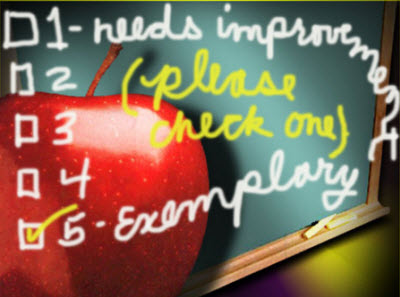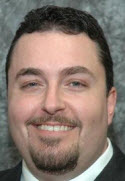Grand Rapids races ahead of state on teacher evaluations
The old system of evaluating a teacher’s performance – a principal observing in a classroom – was not particularly effective, school administrators and teacher union leaders agree.
The challenge is in coming up with a better system.
A committee of education experts – the Michigan Council for Educator Effectiveness – has been working since 2011 on a statewide standard for judging teachers’ effectiveness and is expected to issue its report later this month.
But Grand Rapids Public Schools’ administrators aren’t waiting.
“Everyone would agree the way we were doing it was not rigorous enough, not consistent enough,” Grand Rapids Public Schools spokesman John Helmholdt said. “We’ve been very methodical in how to approach this new system.”
Getting a grip on teachers’ work
This school year, Grand Rapids administrators began using a statistical model to evaluate teachers that includes students’ test scores, as well as each teacher’s effort to improve their skills. The district’s principals and other administrators have been trained in the Danielson Framework for Teaching, a tool to bring consistency and objectivity in how they observe a teacher’s classroom performance.
“This is a dramatic shift in how things were done in the past,” Helmholdt said. “I think we’re onto a model here that really could become a statewide model.”
Some teachers and their union leaders don’t share his enthusiasm.
Relations between the Grand Rapids Education Association and school board, never cordial, have been strained in recent years, particularly since 2011, when the Legislature weakened the state’s teacher tenure law, and last December, when Gov. Rick Snyder signed a law making Michigan a Right-to-Work state.
“I think it’s fair to say there’s been a history that has led to a level of distrust,” said Paul Helder, president of the GREA, the union representing the district’s 1,400 teachers.
In revising the state tenure law, the Legislature decreed that the method for evaluating teacher performance no longer would be subject to negotiations between the union and the school district.
“When people have been excluded from the process, there’s a natural suspicion,” Helder said. “The question is how do we resolve this?”
The union is considering a lawsuit to block the new evaluation process on the grounds that the Grand Rapids Board of Education never adopted a formal policy on teacher evaluations, he said.
“There are a number of problems with that process,” Helder said. “The association’s concern is how can the rights of our members be protected?”
Some Grand Rapids teachers are concerned that the district is funding development of its evaluation method with a grant from the Douglas and Maria DeVos Foundation. Some members of the DeVos family supported the state’s right-to-work law, Helder noted, and Dick DeVos, the Republicans’ unsuccessful candidate for governor in 2006, was a strong advocate for vouchers that would have given tax money to parochial schools.
In amending the state’s teacher tenure law, the Republican-controlled Legislature required public school districts to conduct annual performance reviews for each teacher, rating them highly effective, effective, minimally effective or ineffective. An ineffective teacher, whether tenured or not, can be fired after being given repeated chances to improve.
Beginning next school year, 25 percent of each teacher’s rating must be based on students’ growth, particularly their improvement on test scores, the new law requires. By the 2015-2016 school year, at least 50 percent of a teacher’s rating will be based on student test scores.
Evaluating a teacher based on students’ test scores can be tricky, particularly in deciding which teacher gets the credit when test scores improve – or the blame when they don’t. Students move from classroom to classroom and often change districts.
“It’s a huge challenge to figure out whose growth should be attributed to which teacher,” said David Stuit, a consultant at Basis Policy Research, hired to help the Grand Rapids schools develop its new rating system. “It can really have implications for a teacher’s growth results.”
Evaluation debate remains heated
Over the past five years, about 20 states have included test scores in teacher evaluations. Florida teachers recently filed a federal lawsuit against the state for basing evaluations on test scores, a move the Michigan Education Association is considering, said spokesman Doug Pratt. The MEA favors a program to improve teacher performance, as long as it’s fair, he said.
“It shouldn’t be about punishing or labeling teachers,” he said. “It should be about helping teachers do better.”
MEA leaders, he added, are hopeful that the Michigan Council for Educator Effectiveness, created by the Legislature to recommend a new standard for rating teachers, will come up with a fair system. The council, chaired by Deborah Loewenberg Ball, dean of the University of Michigan School of Education, has been piloting different methods of evaluating teachers in 14 Michigan districts this school year. The council is expected to release its recommendations to the State Board of Education, the governor and the Legislature in June.
Administrators in the Grand Rapids Public Schools, the state’s fourth-largest district, assume the Legislature will keep to its timetable, phasing in test scores as half of each teacher’s evaluation. The students’ scores on the Michigan Educational Assessment Program, the Northwest Evaluation Association and other standardized tests will provide the statistical basis for judging each teacher’s performance, Mary Jo Kuhlman, the district’s assistant superintendent, said.
The district will combine the data with classroom evaluations. It also will survey each teacher on how well they think they are performing, and then will compare that with how the students rate their teachers.
Under state law, any teacher rated ineffective must be given an “individual development plan” and must be repeatedly re-evaluated. Ultimately, a teacher who fails to improve can be fired.
“There are teachers who fear it’s an ‘I gotcha’ moment,” Kuhlman said, which she denied. “We’re building a system for the 95 percent of teachers who do perform, who do their best, versus a system for the nonperformers.
“Not everyone will go with us,” she conceded. “We’ll give everyone a chance. But we must first and foremost meet the learning needs of our students. Bottom line, that’s all that matters.”
Pat Shellenbarger is a freelance writer based in West Michigan. He previously was a reporter and editor at the Detroit News, the St. Petersburg Times and the Grand Rapids Press.
Michigan Education Watch
Michigan Education Watch is made possible by generous financial support from:
Subscribe to Michigan Health Watch
See what new members are saying about why they donated to Bridge Michigan:
- “In order for this information to be accurate and unbiased it must be underwritten by its readers, not by special interests.” - Larry S.
- “Not many other media sources report on the topics Bridge does.” - Susan B.
- “Your journalism is outstanding and rare these days.” - Mark S.
If you want to ensure the future of nonpartisan, nonprofit Michigan journalism, please become a member today. You, too, will be asked why you donated and maybe we'll feature your quote next time!


 (courtesy image/used under Creative Commons license)
(courtesy image/used under Creative Commons license) Paul Helder
Paul Helder University of Michigan education school dean Deborah Ball is leading a state effort to find new and better ways to evaluate teacher performance.
University of Michigan education school dean Deborah Ball is leading a state effort to find new and better ways to evaluate teacher performance.